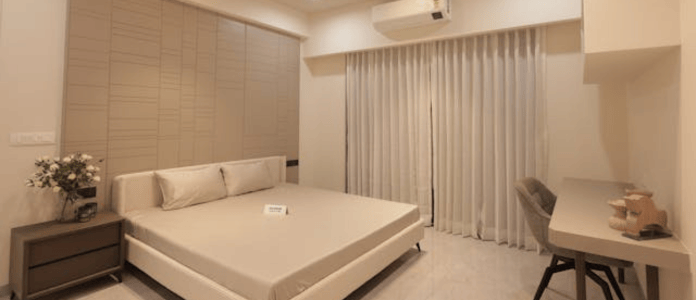Modern homeowners think carefully before starting a project, looking at how a change will affect their daily comfort, long-term expenses, and the overall home. The mindset has shifted from impulsive renovation to planned improvement; each update is expected to serve a clear function while adding subtle value.
Every decision now begins with observation. A homeowner might notice where a system feels outdated or where a room no longer fits their lifestyle. Instead of rushing to replace everything, they pause to assess what truly needs attention and who can guide them through the process. This new approach turns upgrading into an informed routine, one that balances practicality, reliability, and comfort in equal measure.
Read more:
- Upgrading Your Home: What to Focus on for Long-Term Benefits
- Family-Friendly Home Upgrades That Are Worth the Investment
- Top Home Upgrades To Improve Long-Term Value And Aesthetics
Seeking Professional Guidance
Professional insight has become an essential part of how homeowners plan and execute upgrades. Contractors, designers, and technicians bring technical understanding that simplifies choices and helps prevent costly errors. Their advice covers structure, materials, and layout, offering direction that fits both budget and long-term reliability. Working with an expert early in the process often clarifies what’s realistic and what can wait, keeping projects grounded.
For mechanical systems like heating and cooling, professional help is even more important, especially when it concerns the air conditioning system. Many homeowners face the question of repair vs replace, whats best for your AC, and a skilled technician can offer a clear answer based on system performance and overall condition. They measure energy efficiency, evaluate age, and calculate cost-effectiveness.
Understanding Daily Use Impact
The upgrades that matter most tend to be the ones felt every single day. Small improvements can have a lasting effect when they make routines smoother and living conditions easier. Homeowners often start by observing where they spend the most time, whether it’s a kitchen that needs better lighting, a hallway that feels cramped, or a living room that could use improved airflow.
Such day-to-day refinements build comfort quietly. Updating flooring that withstands traffic, adjusting storage layouts, or refining lighting placement can make a home function more naturally.
Timing Upgrades Thoughtfully
Timing plays an understated but powerful role in how effective an upgrade becomes. Every project carries its own ideal season or moment within the year. Planning roof maintenance during dry months, painting before humidity rises, or tuning an HVAC system ahead of summer helps work progress smoothly. A schedule built around these windows keeps home care steady rather than reactive.
A homeowner who works from home may plan quieter projects during travel periods, while families might schedule renovations when routines slow down. Planning upgrades with time in mind brings calm and order to a process that can otherwise feel disruptive.
Choosing Between Remodels and Fixes
Not all problems need complete reconstruction. Many homeowners now focus on solving specific issues rather than redoing entire rooms. A remodel reshapes structure and design, but smaller fixes can often resolve what feels outdated or inefficient. Knowing which path to take saves time and keeps the home comfortable during transitions.
Targeted improvements, like updating hardware, refinishing surfaces, or replacing worn elements, help maintain balance without overwhelming the household. Such smaller steps let progress build over time, turning maintenance into a manageable routine rather than a large, single event.
Weighing Technology Updates
Technology influences nearly every part of modern home design. From thermostats to lighting systems, digital tools promise convenience and control. Homeowners, however, have learned to approach these updates selectively. The most valuable additions are those that simplify daily routines without adding complexity or frequent maintenance.
Before installation, it’s common to assess reliability, compatibility, and long-term support. A dependable system that integrates smoothly with existing devices offers steady value and fewer interruptions. Modern living benefits most from quiet, efficient technology that operates in the background, enhancing comfort rather than demanding constant attention.
Focusing on Safety
Safety remains one of the strongest reasons homeowners choose to upgrade. Many projects begin with electrical checks, foundation reinforcement, or better ventilation because these areas directly influence security and health. Updating wiring, adding ground fault protection, or replacing outdated panels keeps the home reliable for years.
A careful inspection schedule promises safety. Having professionals evaluate key systems at regular intervals prevents hidden problems from growing into serious risks. Securing railings, improving lighting along stairways, or adding smoke and carbon detectors creates steady peace of mind.
Adapting Older Homes
Many older homes carry strong character but need functional updates to match modern living. Homeowners often focus on insulation, plumbing, or ventilation before starting visible changes. These updates keep the home stable while maintaining its familiar appearance. The process is about renewal rather than replacement.
Adding energy-efficient windows, sealing gaps, or installing quieter fixtures brings comfort while keeping original materials intact. This approach respects the home’s history but allows it to serve new generations comfortably. Adapting older structures in this way preserves their charm while supporting how people live today.
Factoring in Sustainability
Sustainability is now a central part of most upgrade plans. Homeowners look for ways to reduce waste, lower energy use, and select materials that age well. Energy-efficient appliances, smart water systems, and weather-resistant surfaces support both the environment and long-term cost control.
Sustainable upgrades often focus on small, continuous changes rather than one-time overhauls. Replacing bulbs with LEDs, improving insulation, or installing low-flow plumbing fixtures steadily reduces impact without changing the home’s style.
Planning for Accessibility
Accessibility upgrades create homes that welcome everyone. Simple design changes, such as wider hallways, lever handles, or low-threshold entries, add comfort without drawing attention. The goal is ease of movement and independence for all residents, regardless of age or ability.
Planning for accessibility helps avoid future strain. Homeowners who include these features from the start build flexibility into their layouts. The result is a space that feels open, balanced, and prepared for life’s changes without losing aesthetic appeal.
Tracking Project Outcomes
Homeowners who review past upgrades tend to plan future ones more effectively. Tracking the performance of materials, the reliability of contractors, and overall satisfaction helps shape smarter decisions next time. This habit transforms renovation into an ongoing, informed process.
Keeping a simple record of what worked well and what caused frustration saves time later. It builds a personal guide that grows with each project. As such, this awareness makes every upgrade more intentional, forming a home that develops through experience rather than chance.
Each project now carries intention, guided by expert input, practical timing, and a clear sense of purpose. Modern homeowners value upgrades that make daily life steadier, safer, and easier to manage. From energy-efficient systems to quiet design adjustments, every improvement works toward lasting comfort.

